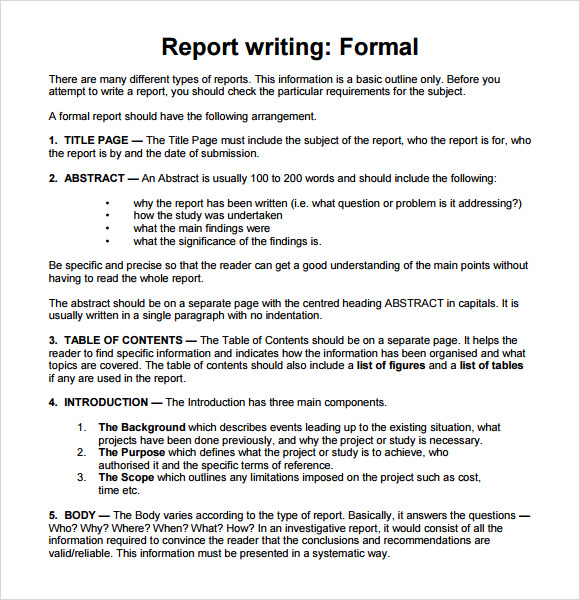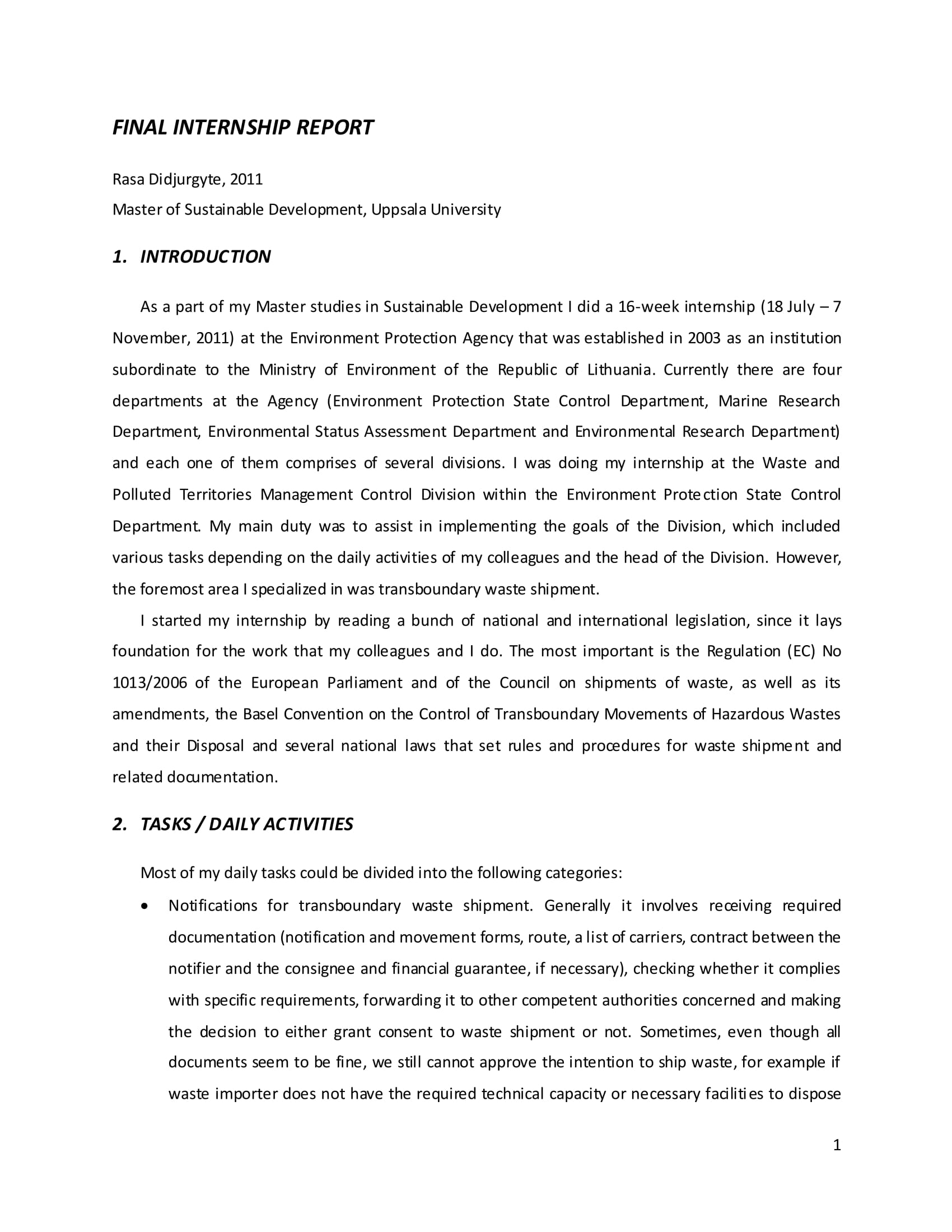
Download the Guide to writing lab and field reports (PDF) on this page for an overview of the structure of reports, as well as some language tips for each section of the report. Note: Always follow the assessment instructions provided in your unit. This guide provides general advice only What this handout is about. This handout provides a general guide to writing reports about scientific research you’ve performed. In addition to describing the conventional rules about the format and content of a lab report, we’ll also attempt to convey why these rules exist, so you’ll get a clearer, more dependable idea of how to approach this writing situation Summary: This resource is an updated version of Muriel Harris’s handbook Report Formats: A Self-instruction Module on Writing Skills for Engineers, written in The primary resources for the editing process were Paul Anderson’s Technical Communication: A Reader-Centered Approach (6th ed.) and the existing OWL PowerPoint presentation, HATS: A Design Procedure for Routine Business Documents
Reports and Memos // Purdue Writing Lab
This page is brought to you by the OWL at Purdue University. When printing this page, you must include the entire legal notice. All rights reserved, writing students reports.
This material may not be writing students reports, reproduced, broadcast, rewritten, writing students reports, or redistributed without permission. Use of this site constitutes acceptance of our terms and conditions of fair use. and the existing OWL PowerPoint presentation, HATS: A Design Procedure for Routine Business Documents.
This resource provides guidance on reporting tests and experiments conducted in a variety of lab settings. Short reports are written for teachers who want to evaluate the accuracy and completeness of your work. You may be asked to include some or all of these parts or others not included here:.
Short reports are written for readers who need to know the results of your work so that they can make a decision. Include your conclusions and recommendations only if they are specifically asked for. Be as brief as possible, preferably one page or less. Use either stationery with the company letterhead or printed forms with standard headings such as To, From, Subject, Date, and other information that a company may wish to include, for example, reference numbers, names of people who receive carbon copies cc:and so on.
State the subject clearly and concisely, and put the most important words at the beginning of the subject line in the heading. Finally, explain why the report is being submitted or what it is intended to do.
This brief, but crucially important overview should usually be no longer than two or three sentences. Present your findings clearly and concisely, in whatever method is most appropriate a list, a table, and so on, writing students reports, with adequate explanation.
Arrange your results so that the ones most important to the project or the reader are placed first. Present the rest of your results in descending order of importance. Since your findings are usually the major reason for the memo, this section may be the longest part of the report. Determine and present the most significant implications or recommendations for action.
You may need to put this section before the findings, writing students reports you may not need to include this section at all unless it is requested.
Company policy usually dictates whether or not this section is included. When evaluating a short memo, the writer should follow a very specific format to keep their document standard, writing students reports.
This format includes questions that the writer should ask themselves, the different parts of the memo, headings that should be used as wells as arguments to add.
These aspects allow the creation of writing students reports short memo to be easy as the formatting writing students reports eventually become second nature. Listed below are the basic questions every report writer should ask himself or herself before writing the report:. Heading : Lists information such as To, writing students reports, From, Subject, Date, and so on, and states the subject clearly and concisely with the most important words at the beginning of the subject line.
Introductory Statement : States the general problem first, then explains the specific question or task being dealt with in the memo, and then explains why the report is being submitted or what it is intended to do. Findings or Results : Presents the findings clearly and concisely with the most important results first. Tables and other information not needed by all readers are, of course, writing students reports, attached separately. Conclusions and Recommendations : Presents the significant implications and recommendations for action if—and only if—conclusions and recommendations have been asked for.
Format Considerations: Make headings and mark your key points so that your readers can quickly survey the contents and find what they want. Find Info For Find Info For Academics Admissions Current Students Athletics About Careers Prospective Students Research and Partnerships Quick Links Apply News President Shop Visit Give Emergency. Purdue Online Writing Lab College of Liberal Arts.
Writing Lab Purdue OWL Research Contact Site Map. Subject-Specific Writing Writing in Engineering Handbook on Report Formats. Welcome to the Purdue OWL This page is brought to you by the OWL at Purdue University.
Report Writing - How to write a Report - Format - Example - Blood Donation Camp
, time: 8:49The Writing Center | Princeton Writing Program

Download the Guide to writing lab and field reports (PDF) on this page for an overview of the structure of reports, as well as some language tips for each section of the report. Note: Always follow the assessment instructions provided in your unit. This guide provides general advice only Writing in engineering courses gives students practice in articulating engineering concepts to different audiences and in engaging with technical communication genres. However, engineering instructors and TAs often struggle to incorporate writing into engineering classes due to a variety of challenges, including class size and the amount of The Writing Center welcomes undergraduate students working on any kind of writing project. Bring your assigned papers, lab reports, junior papers, senior theses, fellowship statements, cover letters, and more! If you’re writing it, we’re here to read it!
No comments:
Post a Comment